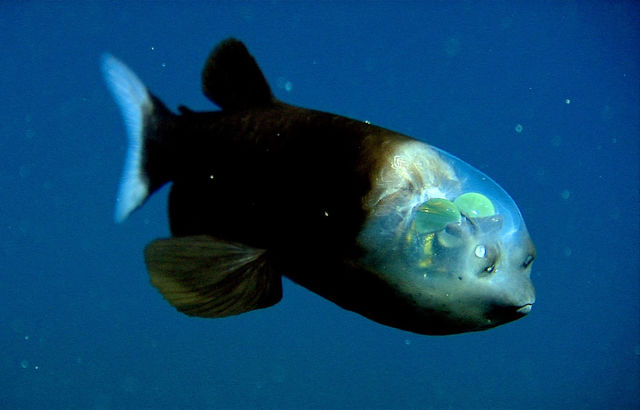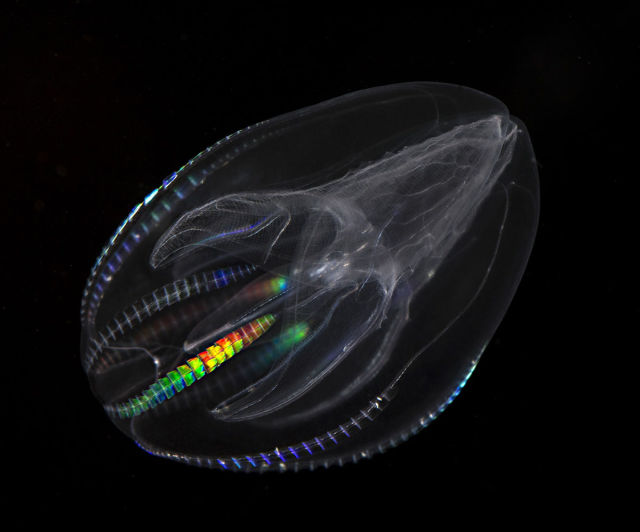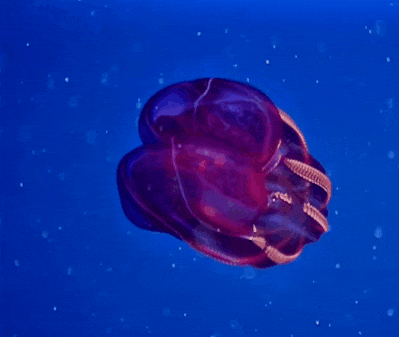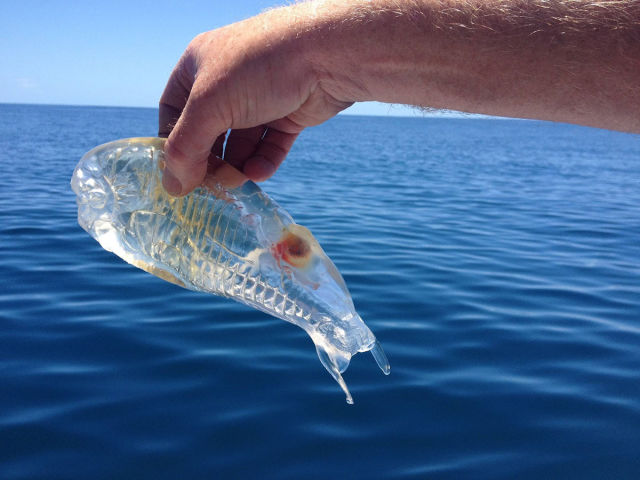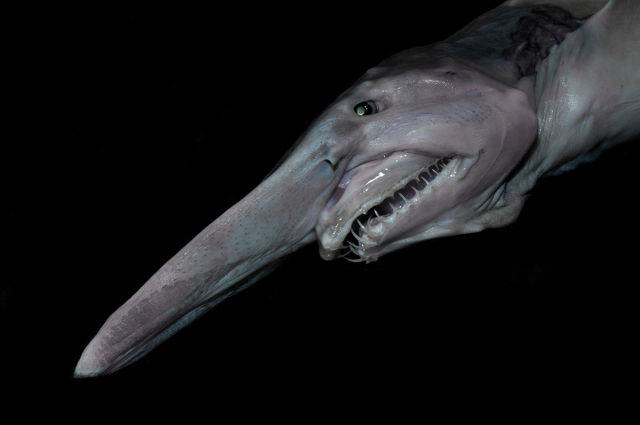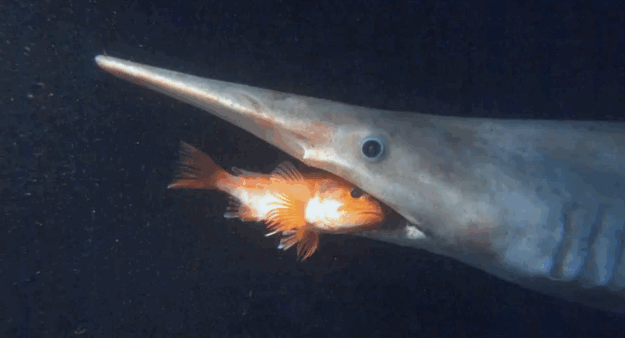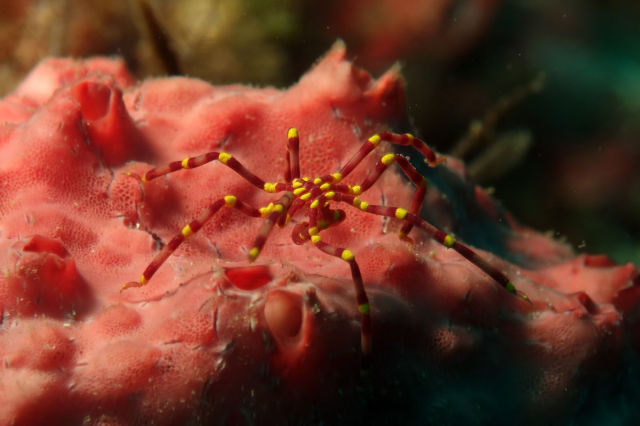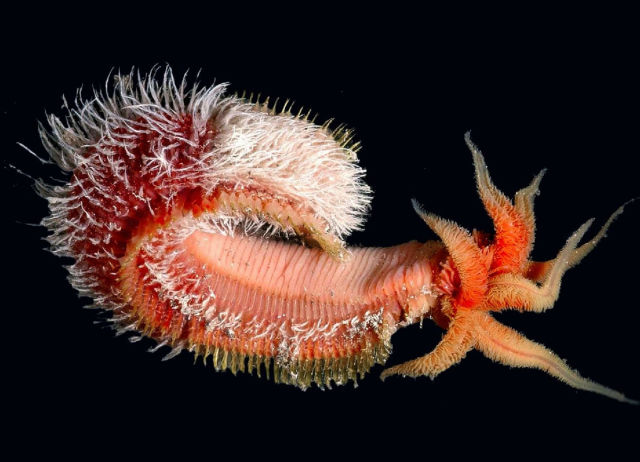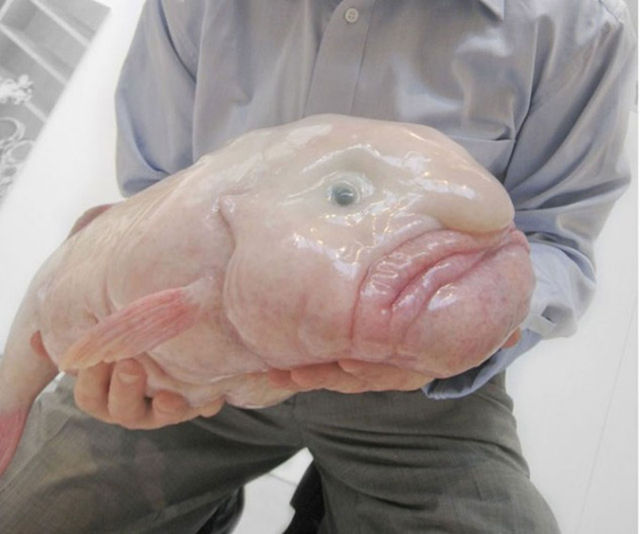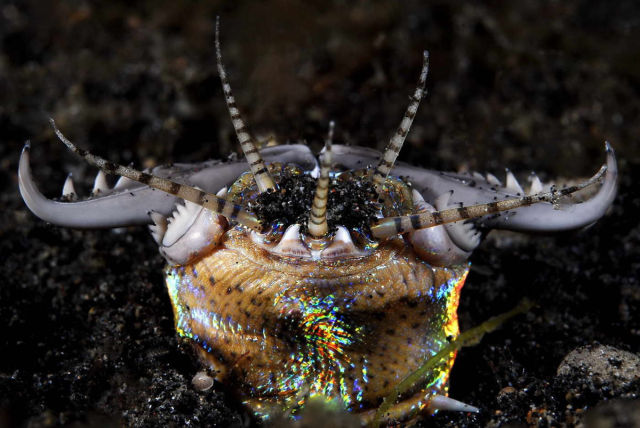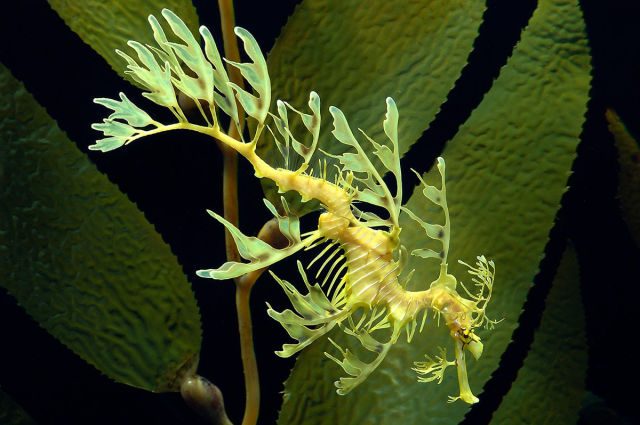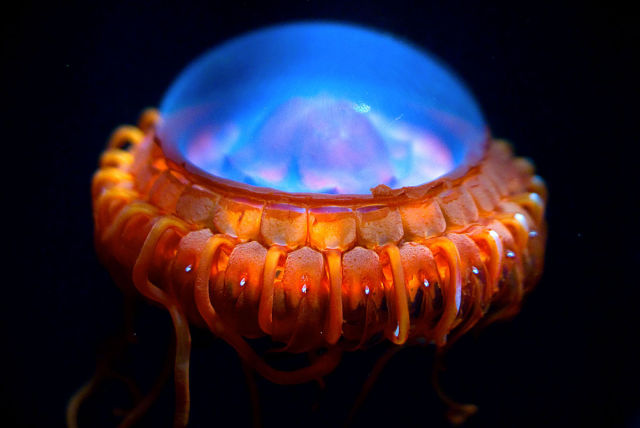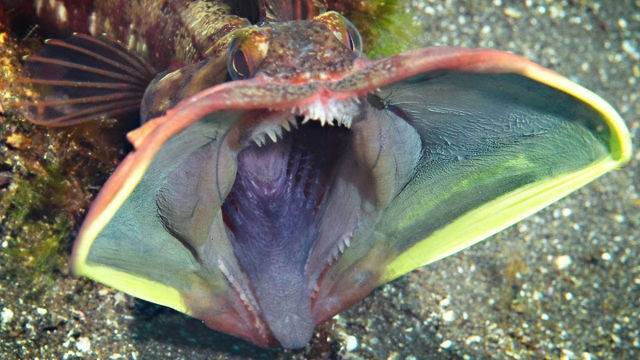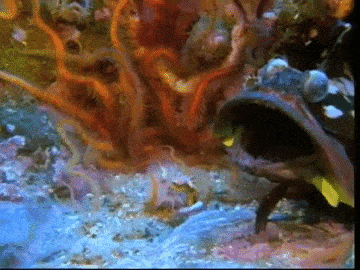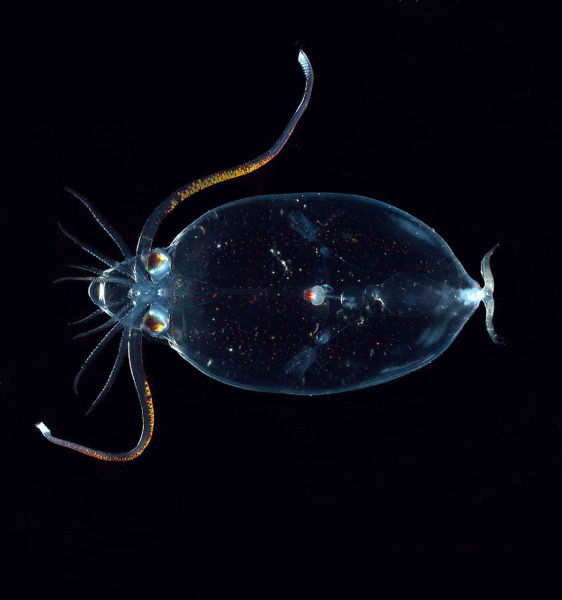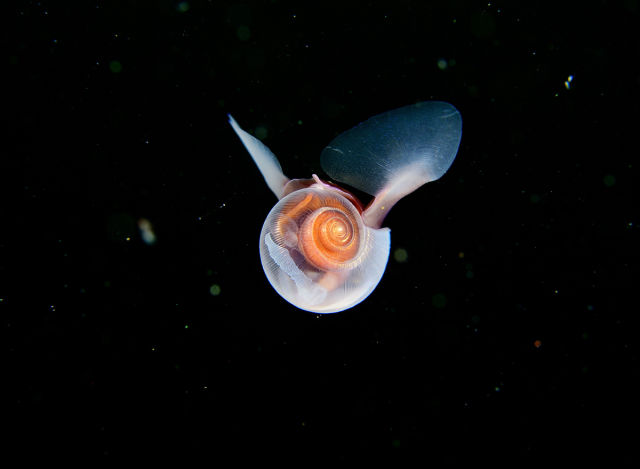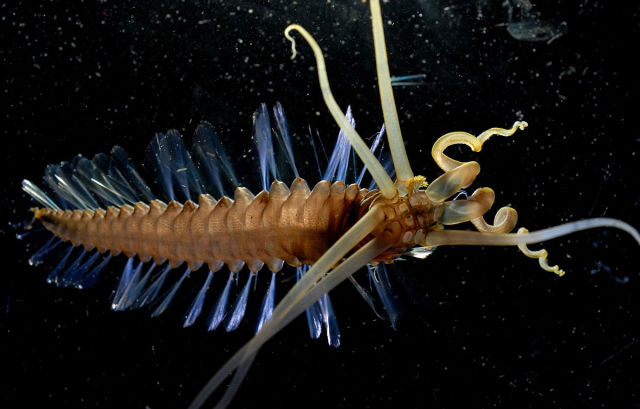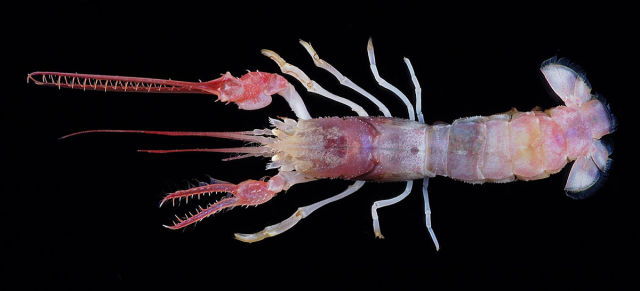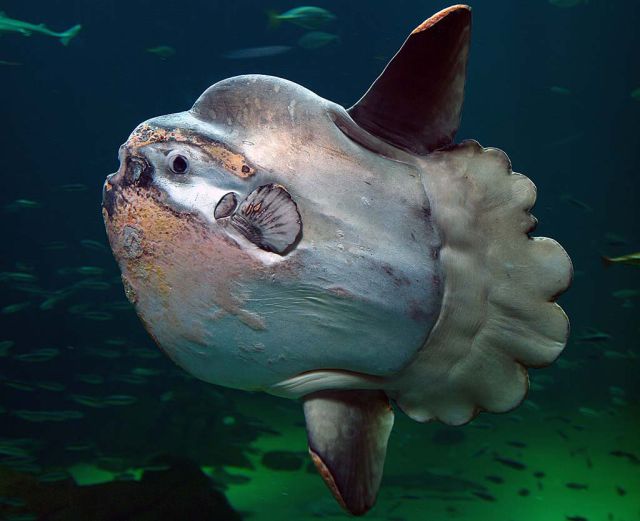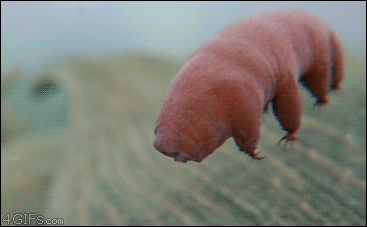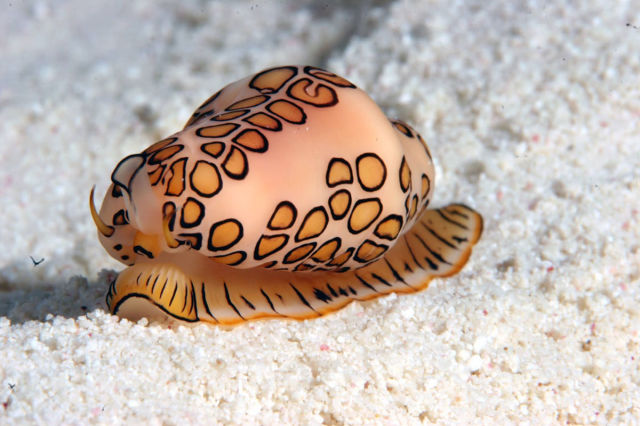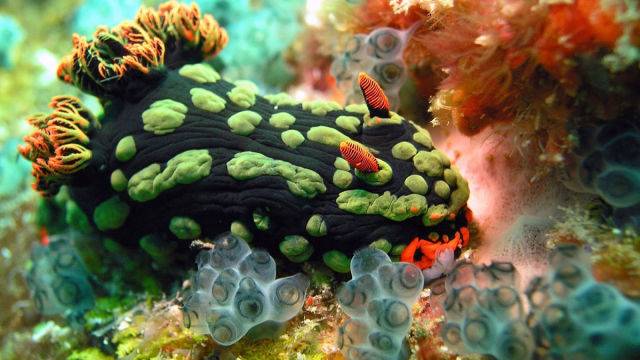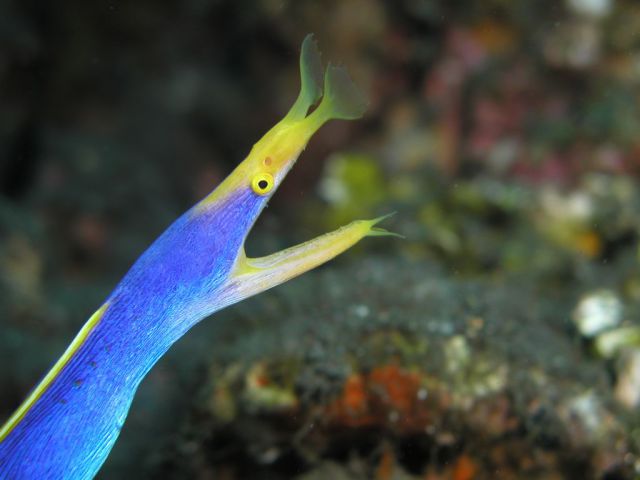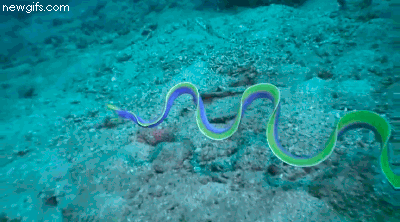Barreleye
With its transparent head that the large eyes look upward through, this fish is one of the strangest ever discovered. Those are not the eyes in the front!
Comb Jellies
The rainbow of colors is not due to bioluminescence, but rather light scattered from the moving cilia used by the comb jellies to move through the water.
Salp
Salps play an important role in carbon cycling because they condense their waste products into carbon-containing pellets which sink to the ocean bottom. This effectively removes carbon from the surface waters.
Goblin Shark
With its nail-like teeth in a jaw that can be projected forward, I’m glad these are deep-sea sharks that rarely come into contact with humans.
Sea Spiders
If you thought the ocean was free of spiders, think again! Although they look like spiders on land we are used to, they are not related.
Pompeii Worm
These worms thrive in the super hot water near hydrothermal vents and are one of the most heat-tolerant animals in the world.
Blobfish
The blobfish may have been voted world’s ugliest animal, but it looks rather like a regular fish when it is in it’s normal environment 4000 feet down in the ocean.
Bobbit Worm
The bobbit worm can grow to 10 feet in length and attack with such force that they can split fish right in half. At least they look kind of pretty and rainbowy!
Flower Hat Jellyfish
These jellyfish eat small fish (and occasionally each other) and they can grow or shrink in size depending on the available food supply.
Leafy Seadragon
These slow-moving fish are in the same family as seahorses and rely on their leafy appendages for camouflage and protection from predators.
Marrus orthocanna
This is a colony animal made up of several individuals (called zooids) linked together by a common stem.
�Atolla Jellyfish
These jellyfish look like a UFO and are pretty alien-like because, like most jellies, they do not have digestive, respiratory, circulatory, or central nervous systems.
Sarcastic Fringehead
These territorial fish are usually found hiding inside objects on the seafloor. When they open their large mouths, you might mistake them for the Predator.
Glass Squid
There are about 60 species of glass squids making them one of the largest families of squid.
Sea Butterfly
Sea Butterflies are tiny sea snails that float and swim through the water with two wing-like feet.
�Pink See-Through Fantasia
This swimming deep-sea cucumber is, as the name suggests, see-through enough to see its digestive system.
Squidworm
The 10 tentacle-like appendages on the squidworm’s head are longer than its whole body and are used to collect food from the water.
�Terrible Claw Lobster
When this crazy deep sea lobster was recently discovered in 2007, a new genus was created just for it.
Venus Flytrap Sea Anemone
This sea anemone is named after the venus flytrap because of the similar shape and they way it feeds by trapping food in its “mouth.”
Mola Mola
The Mola Mola is known as the ocean sunfish and is the largest bony fish. They can weigh up to 5000 pounds.
Red-Lipped Batfish
These fish are not very good at swimming, but use their fins to walk along the seafloor.
Water Bear
These little micro-animals may be less than 1 mm long, but they can take pretty much anything. They can survive temperatures from almost absolute zero (-457℉) up to 357℉, withstand 1000 times more radiation than most animals, come back to life after being dried out for 10 years, and are the first animals that are known to survive the vacuum of space.
Flamingo Tongue Snail
The spots you see are not actually on the shell, but are part of the snail’s mantle flesh which covers the shell. Many people collect the snails thinking they will have the spots.
Nudibranch
Nudibranchs are commonly called sea slugs and are some of the craziest looking ocean animals. There are over 3000 different species of them.
Dumbo Octopus
Named for the ear-like fins that resemble Dumbo’s ears, this octopus lives deeper than any other at depths of up to 13,000 feet.
Ribbon Eel
The ribbon eel is a type of moray eel. They all start out as males, but will start to develop female parts as they mature.

